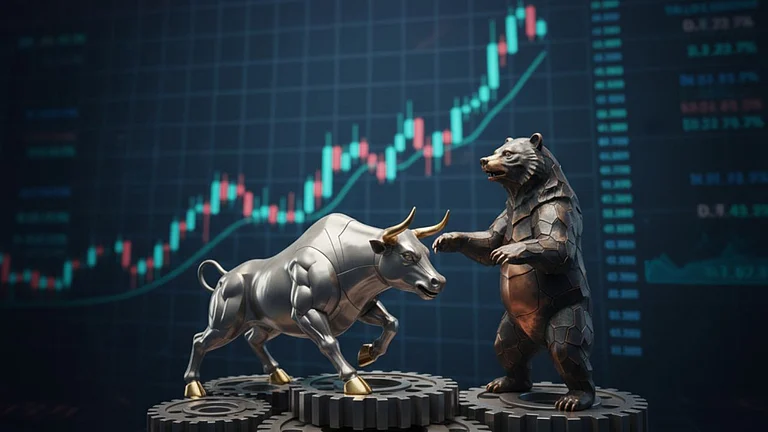Gold prices have been falling in both the global and domestic markets after hitting record highs a week ago. In the international market, spot gold price fell by 0.1 per cent to $2,874.69 per ounce on February 28, 2025. It had previously surged to a record high of $2,956.15 an ounce, struggling to cross the $3,000 level.
US gold futures expiring in April slipped 0.3 per cent to $2,886.80 per ounce, trading near its one-week low. In early trading, MXC April Futures traded at Rs 84,663 per 10 gram, down by 0.63 per cent. The price of 24-carat gold in Delhi, India dropped by Rs 54 to Rs 8,699 per gram. The price of 22-carat gold is now Rs 7,975 per gram, down by Rs 50.
Over the past week, the price of 24-carat gold has declined 0.8 per cent, and in the last month, it has dropped by nearly 6 per cent.
Why Gold Prices Are Falling?
These are the reasons behind the fall in gold prices.
Profit Taking, Weak Demand: According to Kaynat Chainwala, AVP-Commodity Research, Kotak Securities, this decline is driven by profit-taking following gold’s all-time highs and signs of weaker physical demand from top consumers. "China's total gold imports via Hong Kong in January fell 44.8 per cent, from 25.007 tons in December to 13.816 tons, the lowest since April 2022. Similarly, India’s gold imports are expected to drop sharply in February, following a six-month low of 30-35 tons in January, Chainwala said.
Strengthening Dollar, Rising Treasury Yields: US President Donald Trump’s latest tariff remarks have further heightened market jitters. This has fuelled the demand for the US dollar.
Chainwala said, "Further pressure on gold prices is being exerted by a stronger US dollar and rising treasury yields, following President Trump's announcement of new tariffs on major trading partners.
According to Reuters, the dollar index was up by 0.7 per cent this week, making gold more expensive for buyers from other countries. A stronger dollar typically makes greenback-priced gold more expensive for investors holding other currencies, thus reducing the demand for the precious metal.
Caution Ahead Of Inflation Data, Fed's Decision On Rate Cuts: Gold prices are also falling because investors are cautious ahead of the release of the Personal Consumption Expenditures (PCE) price index, which is a key inflation measure closely monitored by the US Federal Reserve.
Jateen Trivedi, research analyst and vice president, commodity and currency, LKP Securities, says, “Market participants will closely watch the Core PCE Price Index for further cues.”
"Recent US data has shown steady economic growth coupled with persistently high inflation, complicating the Federal Reserve's monetary policy decisions. Gold may face further pressure if the Fed’s preferred inflation gauge, expected to ease to its slowest pace since June, shows any upside surprise in January," Chainwala said.
She further added, "Traders are currently fully pricing in two quarter-point interest rate cuts this year, with weaker US economic data pushing expectations of these cuts forward. There is growing anticipation that the Federal Reserve may implement its first rate reduction in June, rather than in September, as expected just a week ago. A higher inflation reading could prompt the Fed to take a more cautious approach toward further rate cuts, potentially leading to a reassessment of these expectations."
Gold Outlook
Trivedi adds, “Further weakness may emerge if Comex gold falls below $2,875 and MCX gold breaches Rs 84,800.”
According to him, in the short run, there is resistance at the Rs 85,550-85,750 price range, and support in the Rs 84,800-85,000 range.
According to Chainwala, gold’s long-term outlook remains positive. She said, this pullback in prices may be nothing more than a temporary bump in the ongoing bullish trend.
"Investment demand remains strong, with World Gold Council (WGC) data showing a significant 48-tonne inflow, valued at $4.6 billion, into North American gold-backed ETFs last week, the largest weekly increase since April. In addition, SPDR Gold holdings have risen to 904.38 tons, the highest since August 2023, while Central banks around the world continue to accumulate gold. Furthermore, the growing risk of stagflation amid Trump’s sweeping tariff plans bodes well for gold prices," she said.













